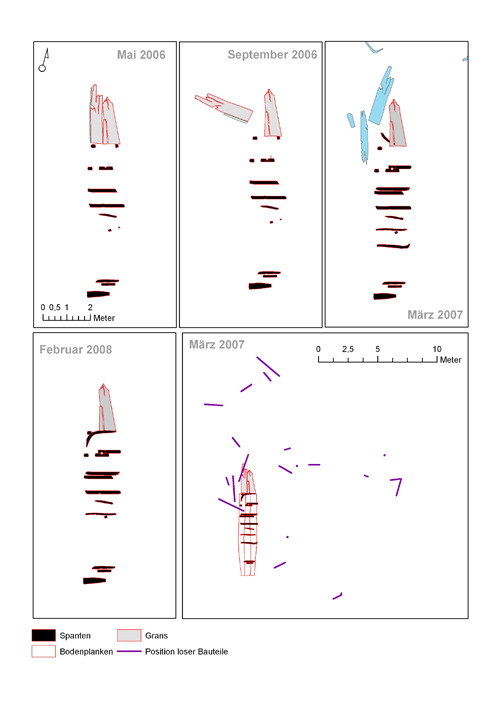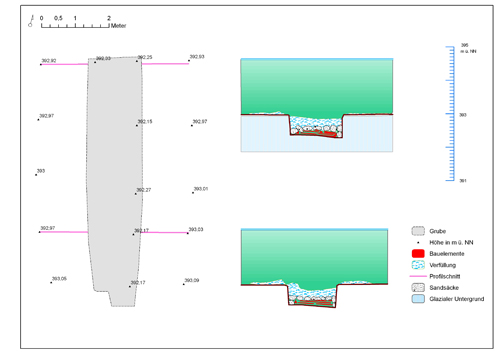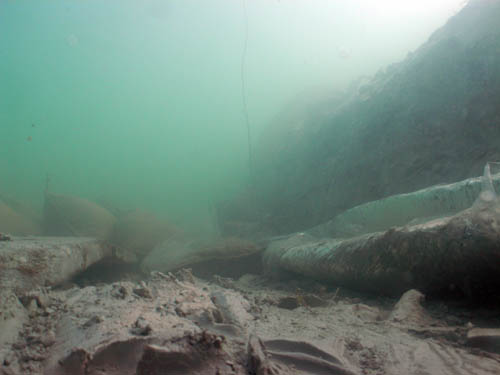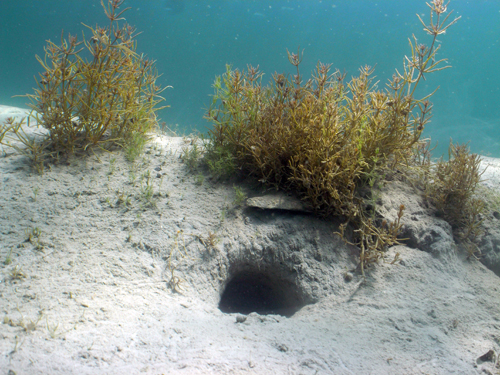Reburial of a medieval vessel in the shallow water zone of Reichenau Island (2011)
We know about two dozen shipwrecks of historical times that are preserved in the sediments of Lake Constance. Only few of them have been systematically investigated by archaeologists. Some of the so far known vessels are under threat by erosion, others suffer from damages caused by badly trained recreational divers. All of them are worth preserving for future researches. The significance of such monuments for the understanding of water transport, trade, and technological exchange has been highlighted by the excavation, conservation, reconstruction and museum display of the 14th century vessel from Immenstaad / Lake Constance.
The Late Medieval vessel “W341” has been monitored by uwarc archaeologists since its discovery at the shores of the World Heritage Site Island of Reichenau in 2006 (read more). Control dives proved that the monument was badly suffering from erosion caused by storms and waves, and also from anchor damages. When it became clear that the vessel was falling apart rapidly and that there was a threat of total loss within years, the Landesamt für Denkmalpflege Baden – Württemberg decided to preserve the monument by excavation and reburial on site.

The framework of the respective works was provided by the Interreg IV – Project “Erosion und Denkmalschutz am Bodensee und Zürichsee”. As a first step, we systematically recovered loose, and also all exposed construction components. In 2010 we excavated floor timbers which had remained under the cover of lake sediments. In spring 2011 these elements were brought to dry land and documented using a laser scan device. Subsequently, all recovered timbers were reburied in the excavation trench, which was deepened to a depth of 80 cm. We covered the wooden elements with sand bags, and finally with natural lake sediments. Since May 2011 the shipwreck is situated under a protecting cover consisting of gravel, glacial clay and sand, which sums up to a height of at least 50cm.



For the future, heritage management of submerged inland water sites posesses a new option. The reburial of W341 illustrates that even large, three-dimensional objects like shipwrecks can be preserved by comparably simple means and considerably low cost budgets.
